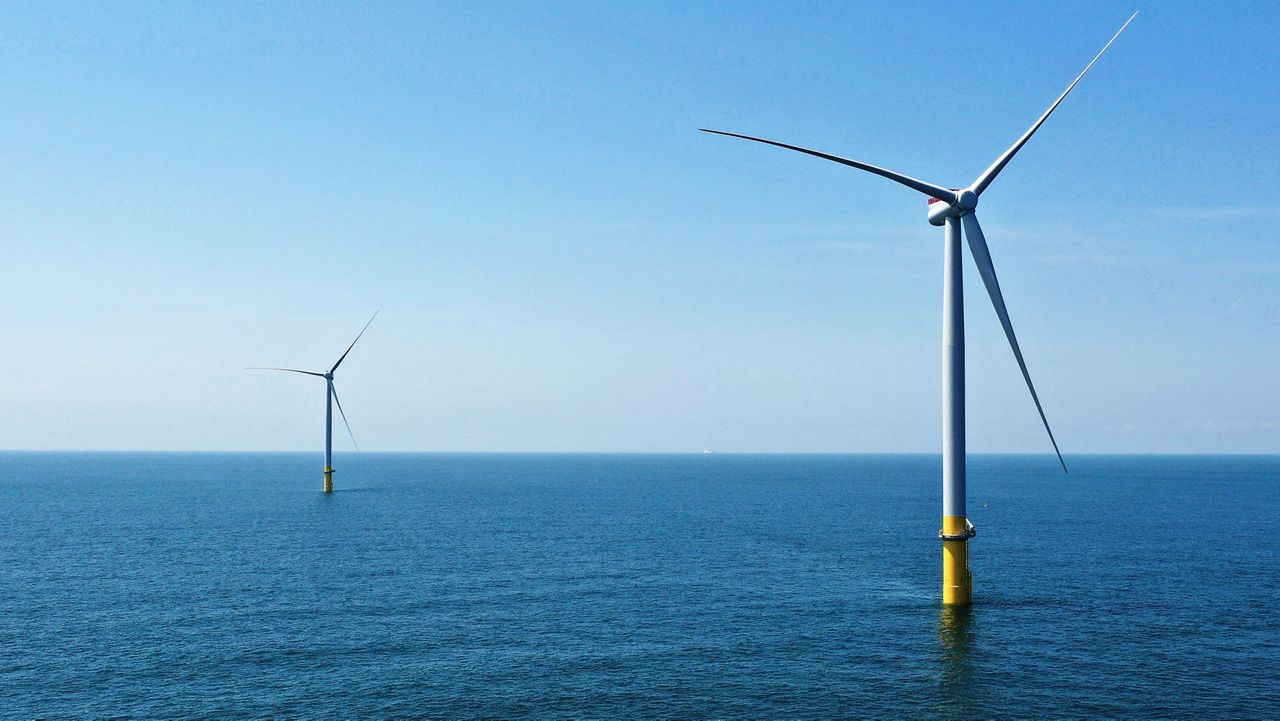The Outer Banks have long been known for how hard the wind can blow — think the Wright brothers in Kitty Hawk. Now, 27 miles out to sea from the site of that first flight, there’s a proposal for an offshore wind farm that could eventually be big enough to generate 2,500 megawatts.
That would be enough to power 700,000 homes, or twice the number of all households in Charlotte.
Last month, Avangrid Renewables, a renewable energy developer, submitted construction and operations plans to federal regulators to build what could be the first large-scale offshore wind farm in the mid-Atlantic.
There’s another big project in the works off Massachusetts and a smaller wind farm off Rhode Island. Dominion Energy has two turbines testing offshore wind off the coast of Virginia.
“We’re proud to be the first to submit a federal permit for a commercial scale offshore wind project in Virginia and the Carolinas,” Avangrid’s Bill White said in a statement. “Kitty Hawk Offshore Wind will deliver clean energy to customers in the region and significant economic benefits and quality jobs for decades to come.”
If the project stays on track, construction could begin as soon as 2024, the company said.
Even though the project is off North Carolina, the power could be sold to Dominion in Virginia, Duke Energy in North Carolina or another company, according to Katharine Kollins, president of the Southeast Wind Coalition.
But, she said, the company will need to make sure it’s able to sell the electricity before they can get financing to do the construction. In the meantime, Avangrid still has some regulatory hurdles to jump through over the next couple years to get the permits so it can build the wind farm.
Virginia already has the rules and regulations in place to allow Dominion to buy electricity from the offshore wind farm, Kollins said. Electricity from offshore wind can be more expensive than buying it from other sources, but it also brings new jobs and other economic benefits.
It’s possible North Carolina lawmakers and regulators could make the changes needed to buy electricity from the Kitty Hawk project.
“We’ve got support from North Carolina voters, which is huge,” Kollins says. A recent poll showed a majority in the state supported regulation to make offshore wind possible.
“This is the only lease in North Carolina, and I think that a lot of stakeholders would like to see additional leases brought forward from the Bureau of Ocean Energy Management,” she says.
Kollins says North Carolina’s coastal region could play a big role in the manufacturing and supply chain that the wind industry could need in the coming decades.
Most of the components have to come from overseas, she says, but as renewable energy gets more support, companies could build those industries along the East Coast.
Longterm, she says the wind power could grow to a $70 billion industry.
“The offshore wind industry presents tremendous opportunity to the Hampton Roads region,” says Doug Smith, with the Hampton Roads Alliance. “I look forward to working with Avangrid Renewables as they develop the Kitty Hawk Offshore Wind project and deliver substantial economic benefits to the Hampton Roads region.”
The company said it expects to create 800 jobs in Virginia and North Carolina and bring $2 billion in economic impact to the region from the Kitty Hawk project.







